Maintaining lush and healthy indoor plants can be tricky, especially in regions or seasons where the air is dry. Low humidity often causes problems such as browning leaf tips, wilting, and slow growth for many tropical houseplants. However, not all plants are fussy about moisture levels—some species can thrive even in arid indoor environments.
In this detailed guide, we’ll explore the best indoor plants that tolerate low humidity, their unique features, and how you can care for them effectively to keep your home vibrant and green all year round.
Understanding Low Humidity and Its Impact on Plants
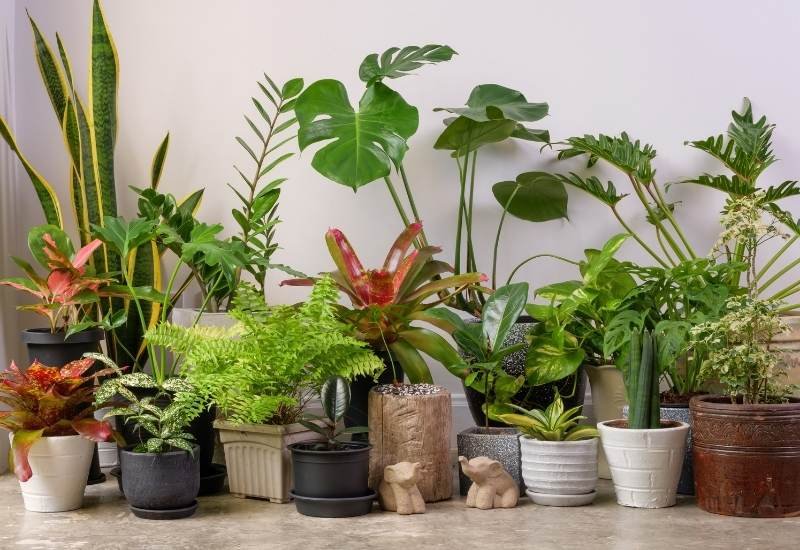
Humidity refers to the amount of water vapor in the air. Most tropical plants prefer humidity levels between 50–70%, but in many homes—especially during winter or in air-conditioned spaces—humidity can drop below 30%.
Low humidity can cause:
- Dry and crispy leaf edges
- Leaf drop or curling
- Stunted growth
- Increased vulnerability to pests like spider mites
To maintain a healthy indoor garden, it’s essential to choose plants that are naturally adapted to dry air conditions, such as desert natives or hardy foliage plants.
1. Snake Plant (Sansevieria trifasciata)
Why it thrives:
The snake plant is nearly indestructible and one of the best low-maintenance options for homes with low humidity. Native to arid regions of West Africa, it stores water in its thick, upright leaves and tolerates neglect with ease.
Care tips:
- Light: Tolerates low to bright indirect light.
- Water: Allow the soil to dry completely before watering.
- Humidity: Thrives in dry air; no misting needed.
- Bonus: Known for its air-purifying properties, filtering toxins like formaldehyde and benzene.
2. ZZ Plant (Zamioculcas zamiifolia)
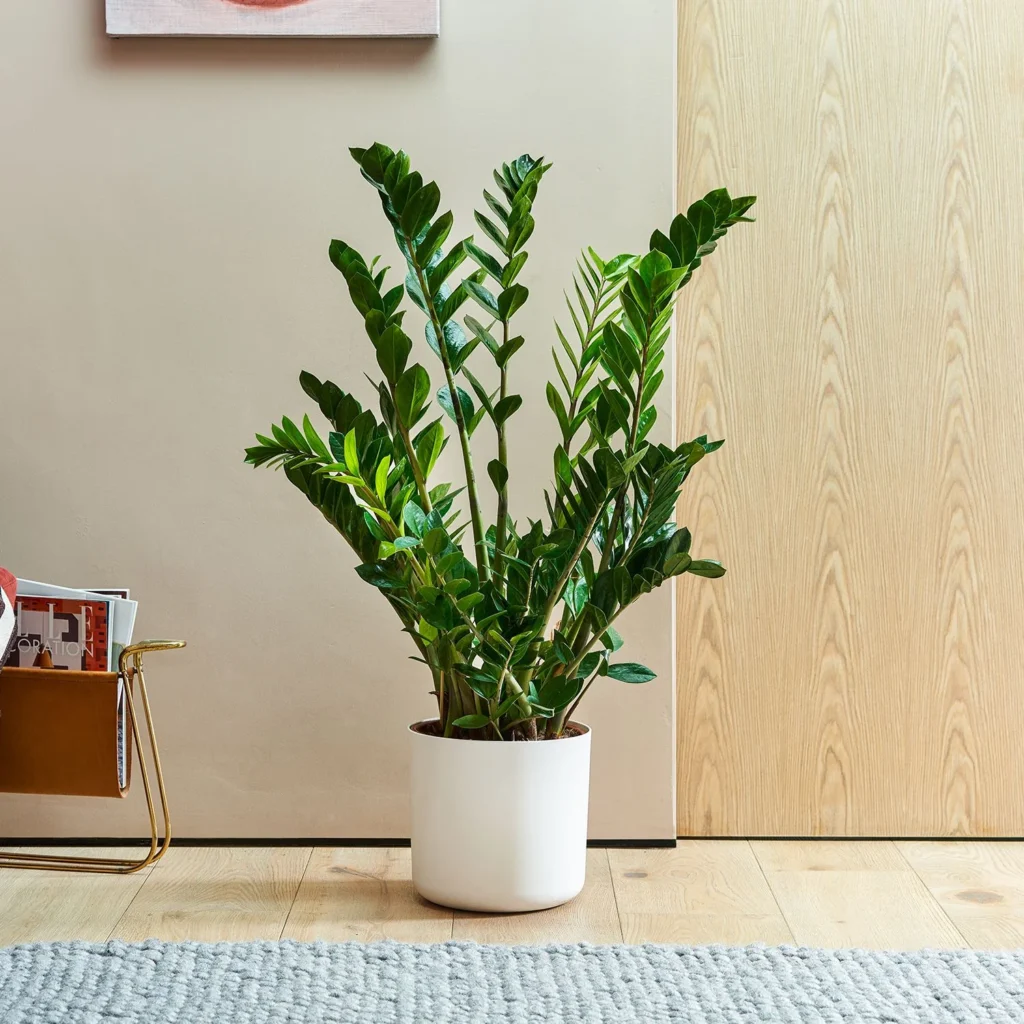
Why it thrives:
ZZ plants are champions of low-light and low-humidity conditions. Their waxy, glossy leaves help retain moisture, making them ideal for dry indoor environments.
Care tips:
- Light: Prefers moderate to low indirect light.
- Water: Water sparingly; drought-tolerant.
- Humidity: Does well in dry air.
- Bonus: The ZZ plant grows slowly but remains lush and shiny year-round with minimal care.
3. Cast Iron Plant (Aspidistra elatior)
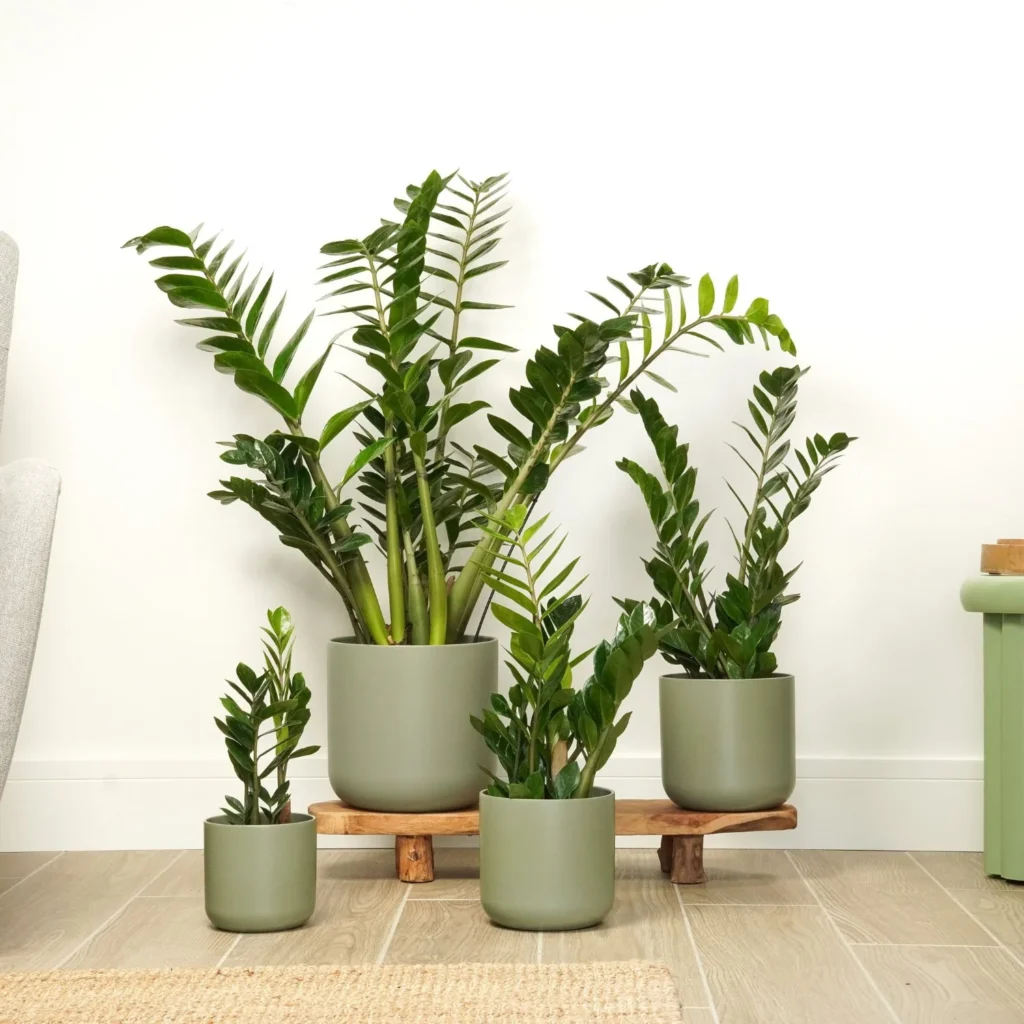
Why it thrives:
As the name suggests, this plant is as tough as iron. It tolerates low light, irregular watering, and dry indoor air without complaint.
Care tips:
- Light: Low to medium light.
- Water: Water when the top inch of soil feels dry.
- Humidity: Adapts well to dry air.
- Bonus: Its deep green foliage adds elegance to shaded corners and hallways.
4. Spider Plant (Chlorophytum comosum)
Why it thrives:
Spider plants are incredibly adaptable and can tolerate both humid and dry air conditions. They’re especially good for beginners who want an easy, fast-growing plant.
Care tips:
- Light: Bright, indirect sunlight.
- Water: Keep soil slightly moist but not soggy.
- Humidity: Handles dry indoor air gracefully.
- Bonus: Produces baby “spiderettes” that you can replant to grow more.
5. Aloe Vera
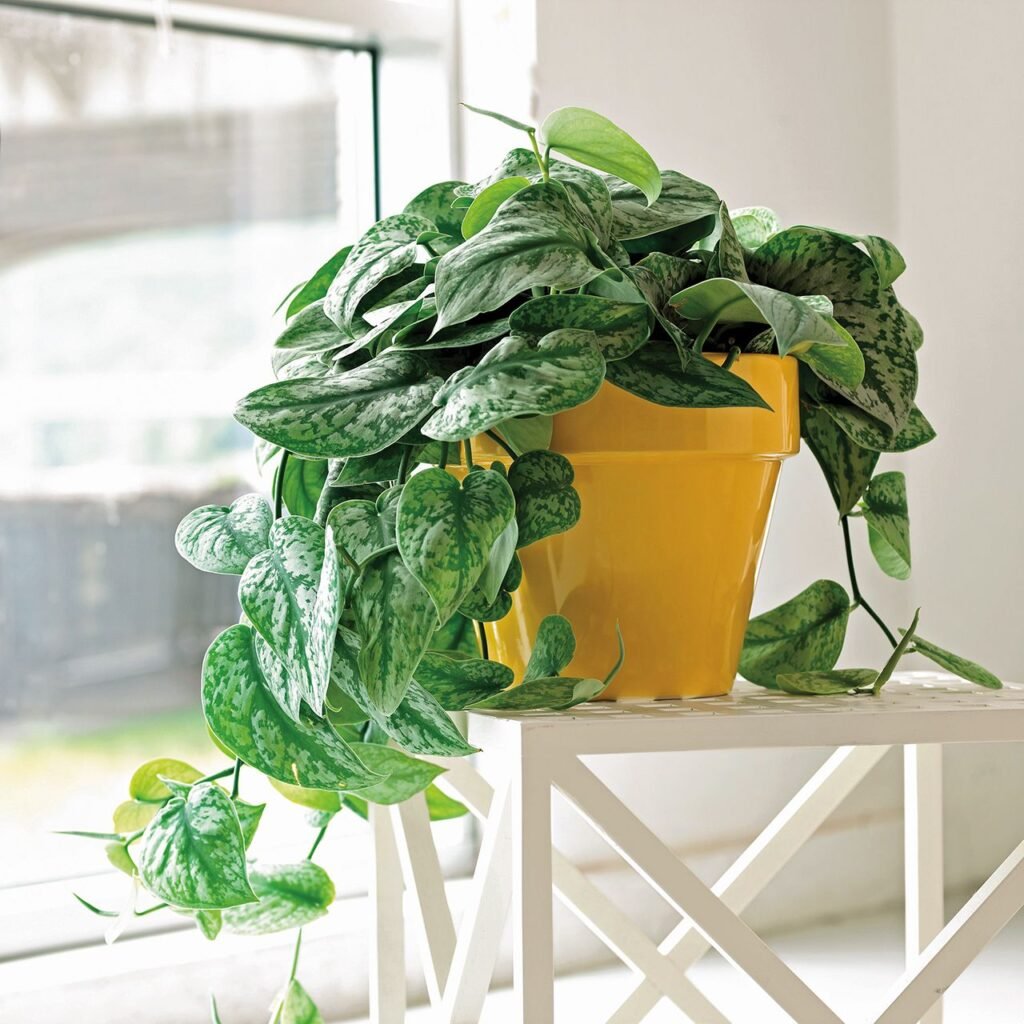
Why it thrives:
Aloe vera is a desert native, making it perfectly suited for low-humidity homes. Its thick, succulent leaves store water, helping it survive long dry spells.
Care tips:
- Light: Prefers bright, indirect sunlight or some direct morning sun.
- Water: Allow soil to dry out completely before watering.
- Humidity: Prefers dry air; avoid misting.
- Bonus: The gel inside its leaves has soothing, medicinal properties for skin burns and cuts.
6. Jade Plant (Crassula ovata)
Why it thrives:
Another succulent that loves dry air, the jade plant is perfect for offices and homes with low humidity. It’s known for its glossy, plump leaves and symbolic meaning of prosperity.
Care tips:
- Light: Bright, indirect sunlight or full sun.
- Water: Water only when soil is fully dry.
- Humidity: Tolerates very dry indoor air.
- Bonus: With proper care, a jade plant can live for decades and even bloom indoors.
7. Rubber Plant (Ficus elastica)
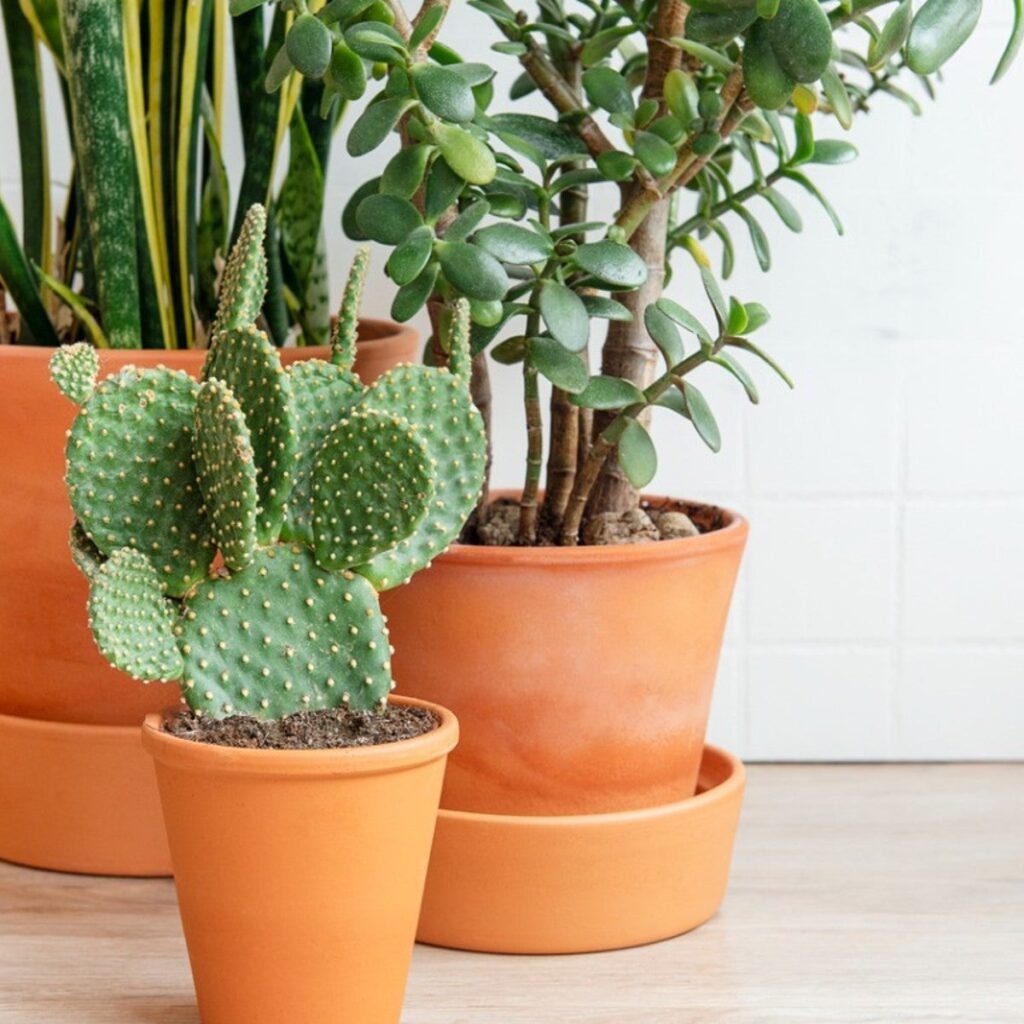
Why it thrives:
Rubber plants are hardy and can adapt to less-than-ideal humidity. Their thick, glossy leaves help retain moisture, making them more resistant to dry air than most tropical plants.
Care tips:
- Light: Bright, indirect light.
- Water: Water when the top 2 inches of soil dry out.
- Humidity: Moderate to low humidity; occasional wiping of leaves helps.
- Bonus: A bold statement plant that purifies indoor air while adding tropical appeal.
8. Ponytail Palm (Beaucarnea recurvata)
Why it thrives:
Despite its name, the ponytail palm is not a true palm but a succulent. It stores water in its bulbous base and thrives in dry, low-humidity indoor environments.
Care tips:
- Light: Prefers bright light or some direct sunlight.
- Water: Water sparingly; too much can cause root rot.
- Humidity: Prefers dry air; never mist.
- Bonus: Its graceful, cascading leaves make it a striking ornamental piece.
9. Pothos (Epipremnum aureum)
Why it thrives:
Pothos is a resilient vine that tolerates a range of conditions, including dry air. It grows beautifully in hanging baskets or trailing from shelves.
Care tips:
- Light: Low to medium indirect light.
- Water: Allow the soil to dry slightly between waterings.
- Humidity: Adapts well to dry environments.
- Bonus: An excellent air-purifier that removes indoor toxins.
10. Dracaena
Why it thrives:
Dracaenas are versatile houseplants known for their sculptural beauty and resilience. Their thick leaves and woody stems make them well-adapted to dry air.
Care tips:
- Light: Moderate to bright indirect light.
- Water: Let the top soil dry between watering.
- Humidity: Handles dry indoor air easily.
- Bonus: Great for offices and homes with air conditioning or heating systems.
11. Succulents and Cacti
Why they thrive:
These desert dwellers are the ultimate survivors in low-humidity conditions. With thick, fleshy leaves and stems, they store water efficiently and require minimal attention.
Care tips:
- Light: Bright light or direct sunlight.
- Water: Water sparingly; once every 2–3 weeks is often enough.
- Humidity: Prefer dry air; never mist.
- Bonus: Available in countless shapes, colors, and textures to add character to your home.
Tips to Keep Your Low-Humidity Plants Healthy
Even though these plants tolerate dryness, a little extra care ensures they remain vibrant:
- Avoid overwatering. In dry air, soil tends to dry faster on the surface but can remain damp underneath. Always check moisture levels before watering.
- Keep plants away from heating vents. Hot air can cause leaf burn.
- Group plants together. This helps create a microclimate with slightly higher humidity.
- Use pebble trays. Placing pots on trays filled with pebbles and water increases localized moisture without over-humidifying.
- Wipe leaves regularly. Dust buildup can interfere with photosynthesis, especially in dry environments.
Why Choose Low-Humidity Tolerant Plants
- Low Maintenance: Perfect for busy people or beginners.
- Versatile: Thrive in offices, bedrooms, and living rooms.
- Resilient: Can withstand neglect, temperature fluctuations, and dry air.
- Aesthetic Appeal: Many of these plants have unique shapes, glossy foliage, or elegant forms that elevate interior spaces.
Final Thoughts
Living in a low-humidity environment doesn’t mean you have to give up on your dream of a lush indoor garden. By choosing plants naturally suited to dry air, you can enjoy greenery that thrives year-round with minimal effort.
Whether you opt for the sturdy Snake Plant, the elegant Rubber Plant, or the eye-catching Ponytail Palm, these species bring life and color to your home—without demanding constant humidity control.
Remember, the secret to a thriving indoor garden lies not in creating a perfect environment but in choosing the right plants for your conditions. With these low-humidity champions, you’ll have a healthy, beautiful green space that flourishes effortlessly.
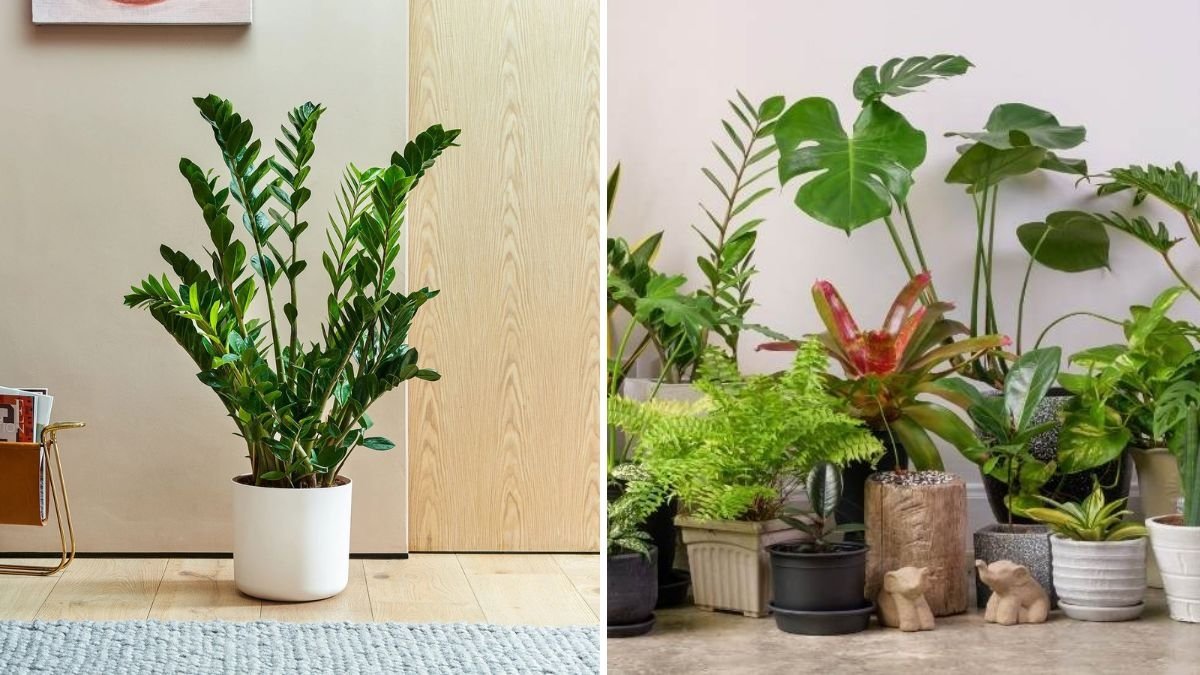




Leave A Comment